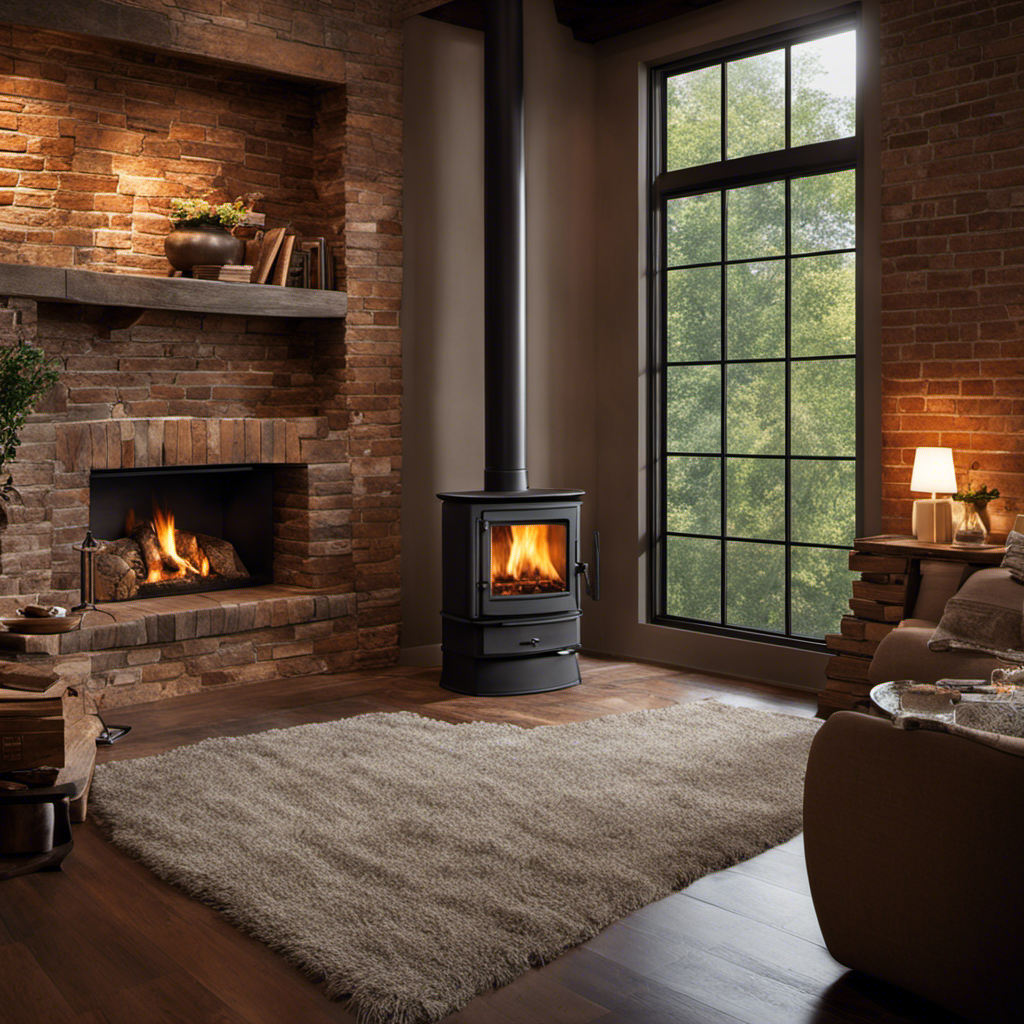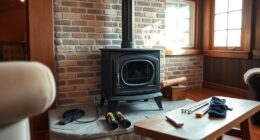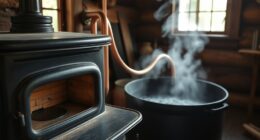
Did you know that adding a wood stove to your home not only creates a cozy and welcoming atmosphere but can also lower your heating bills?
In this article, I’ll share my knowledge and experience on how to successfully add a wood stove to your home.
From assessing your heating needs to choosing the right stove and safely installing it, I’ll guide you through every step of the process.
Get ready to enjoy the comfort and efficiency of a wood stove in your house!
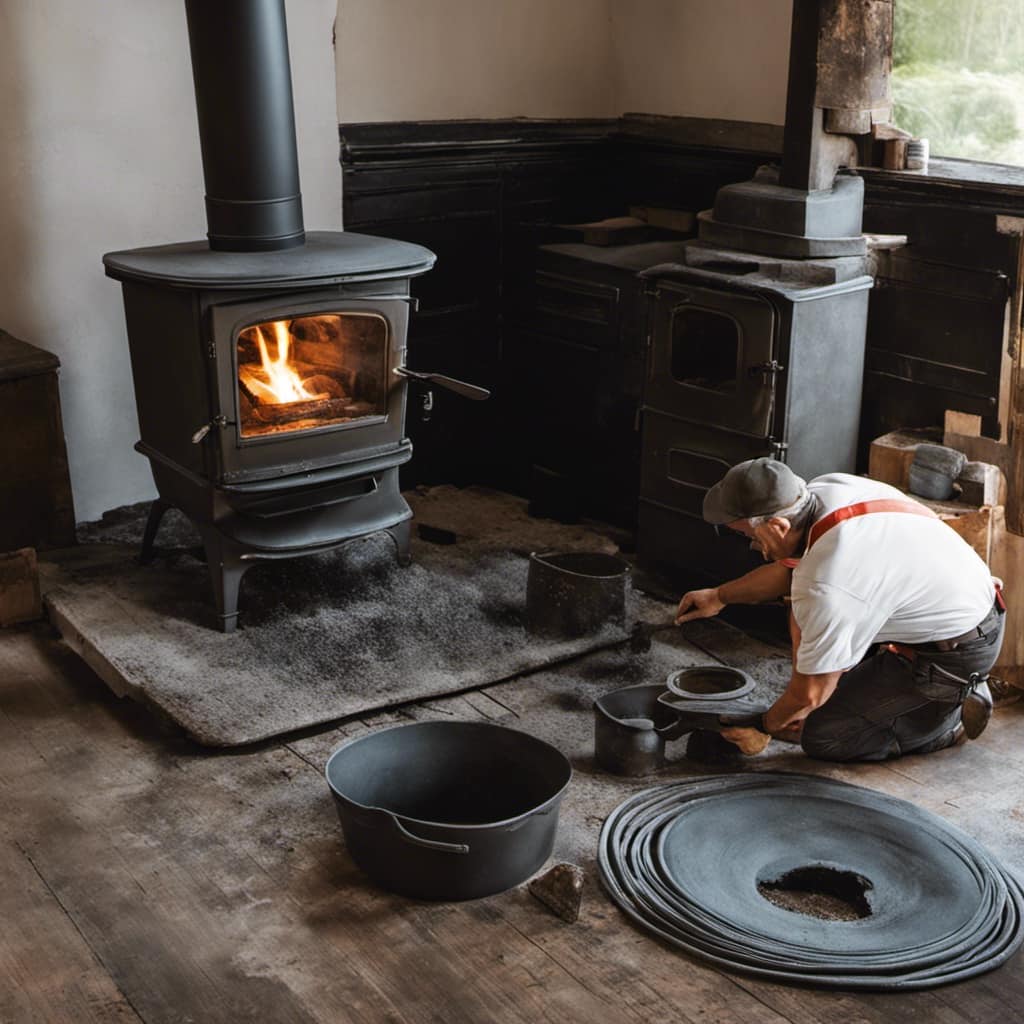
Key Takeaways
- Calculate the costs associated with different heating options, including upfront and long-term operating costs.
- Assess the heating requirements of your home to determine the most efficient solution.
- Consider the environmental impact of different heating options.
- Seek professional help if needed to ensure the wood stove is installed safely and meets all requirements.
Assessing Your Heating Needs
I’m evaluating my heating needs to determine the most efficient solution for my home. One of the first steps in this process is calculating the costs associated with different heating options.
It’s important to consider not only the upfront cost of the heating system itself but also the long-term operating costs. For example, a wood stove may have a higher initial cost compared to other heating systems, but it can provide significant savings in the long run due to the lower cost of wood fuel.
Additionally, evaluating energy efficiency is crucial to ensure that the chosen heating solution maximizes heat output while minimizing energy waste. This can be done by looking at the stove’s efficiency rating and considering factors such as insulation and proper ventilation.
Choosing the Right Wood Stove
After carefully considering the available options, I confidently chose the most efficient wood stove for my home. Wood stove efficiency is crucial for maximizing heat output while minimizing fuel consumption. To enhance the performance of my wood stove, I invested in a few essential accessories:
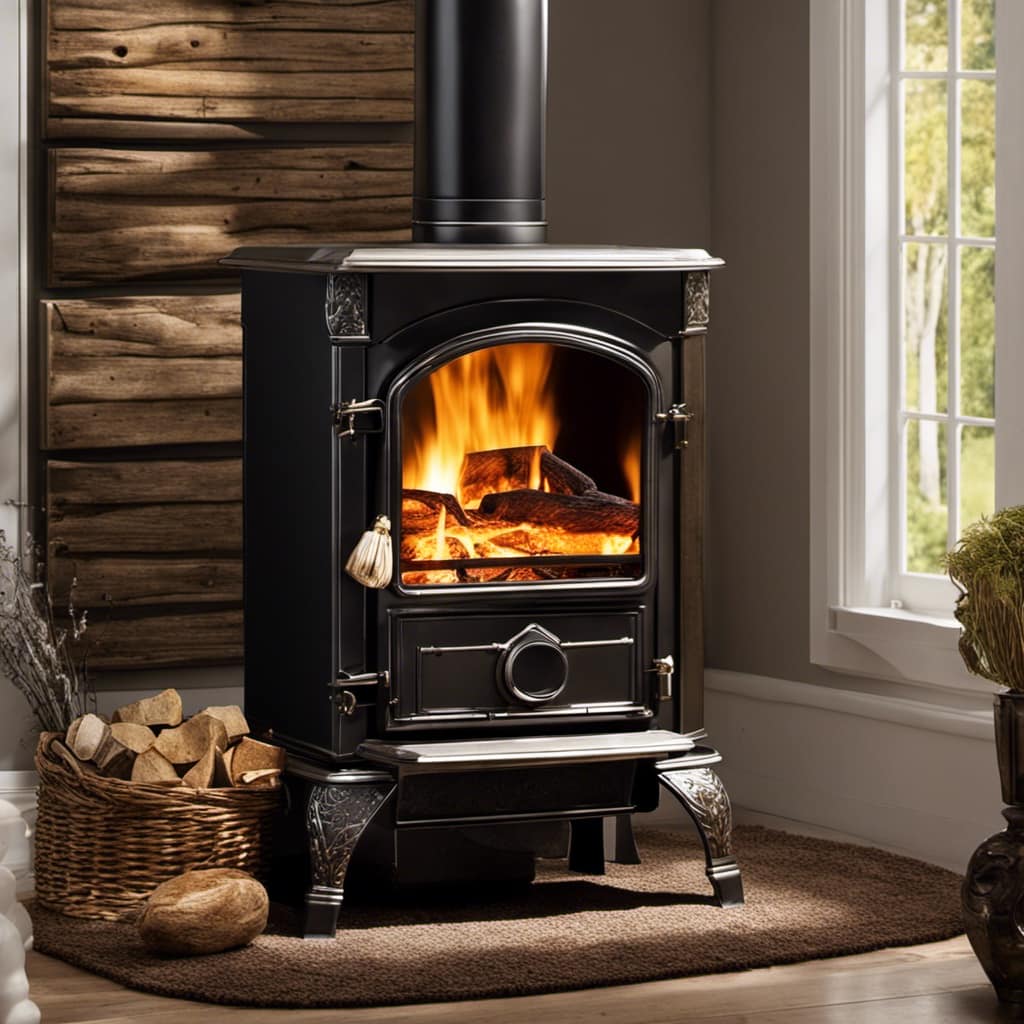
Heat-resistant gloves: These gloves not only protect my hands from burns but also allow me to handle the stove and adjust the logs safely.
Firewood rack: A well-designed firewood rack keeps the logs organized and off the ground, ensuring proper airflow and faster drying for optimum burn efficiency.
Ash bucket with lid: Cleaning the stove regularly is essential for maintaining its efficiency. An ash bucket with a lid allows me to safely dispose of the ashes, preventing any accidental fires.
Preparing Your Home for Installation
Before beginning the wood stove installation, I always carefully and thoroughly prepare my home using a detailed checklist. Fire safety is paramount when adding a wood stove to your house, so proper preparation is crucial. One of the first steps I take is to ensure that my chimney is in good condition and free of any blockages. I also make sure to clean out the chimney and inspect the flue for any signs of damage. Additionally, I check the surrounding area for any potential fire hazards and remove any flammable materials. Finally, I install a fire-resistant hearth pad and create a clear space around the stove for safety. By following these steps, I can confidently move on to installing my wood stove safely and properly.
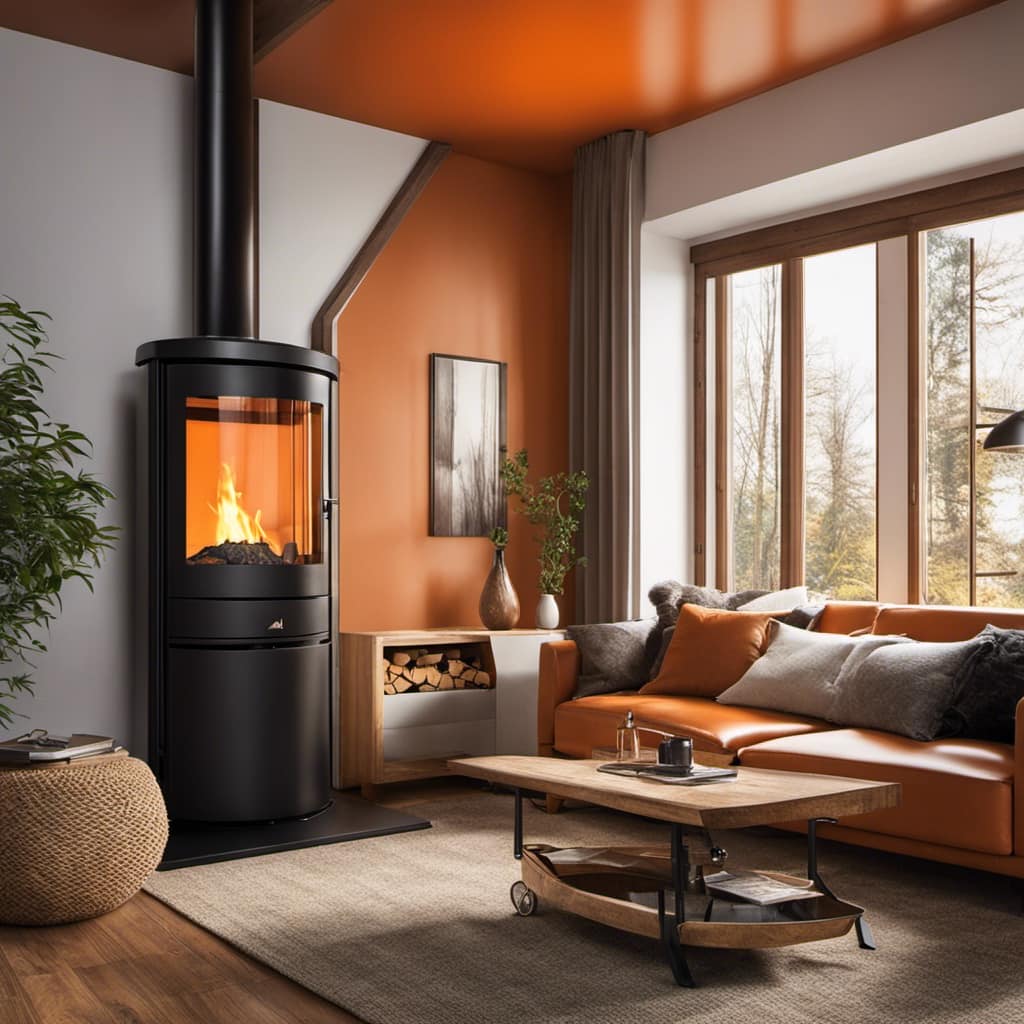
Transitioning into the next section, I’ll now share my knowledge and experience on how to install a wood stove in your home.
Installing Your Wood Stove Safely and Properly
During the installation process, I always make sure to follow the manufacturer’s instructions carefully to ensure that my wood stove is installed safely and properly. Installing a wood stove requires careful consideration of ventilation and safety precautions.
Here are three important aspects to keep in mind:
Ventilation: Proper ventilation is crucial to ensure the safe operation of a wood stove. It’s essential to install the stove in a well-ventilated area to prevent the buildup of harmful gases, such as carbon monoxide. This includes ensuring the stove is connected to a chimney or flue system that meets local building codes.
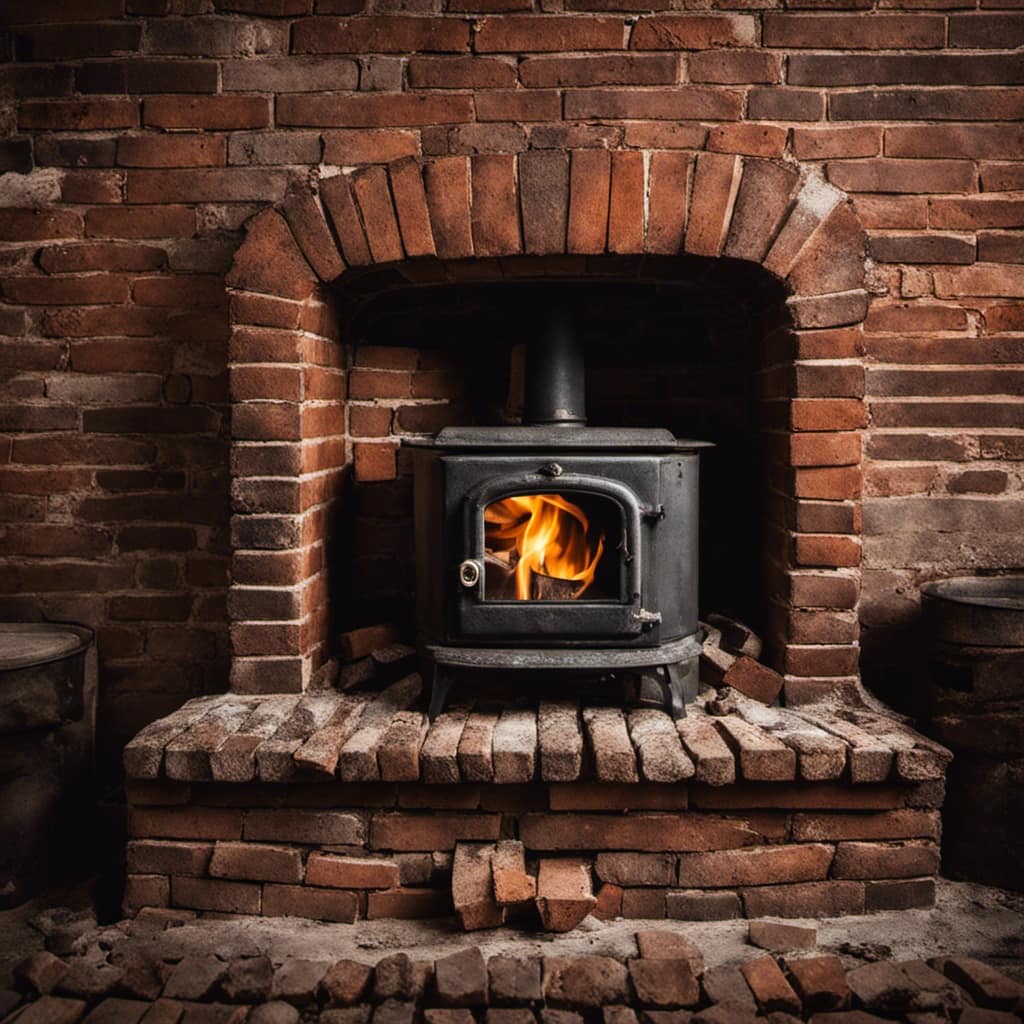
Clearances: It’s important to maintain proper clearances between the wood stove and any combustible materials, such as walls, furniture, or curtains. This helps prevent the risk of fire. The manufacturer’s instructions will specify the required clearances, and it’s essential to adhere to them diligently.
Fireproofing: To further enhance safety, consider installing a fireproof base or pad beneath the wood stove. This protects the floor from heat damage and reduces the risk of accidental fires.
Is It Possible to Add a Wood Stove to an Upper Level of a House?
Yes, it is possible to consider moving a wood stove upstairs in a house. However, it requires careful planning and construction to ensure proper venting and support for the added weight. Consulting with a professional contractor or fireplace installer is essential to assess the feasibility and safety of this project.
Maintaining and Operating Your Wood Stove
I always clean out the ashes from my wood stove before and after each use to ensure efficient operation. Wood stove safety and efficient wood burning techniques are crucial to maintaining a safe and productive heating system. In addition to regular cleaning, there are several other practices that can enhance the efficiency of your wood stove. One important technique is to properly season your firewood. This involves allowing the wood to dry for at least six months before burning it, which reduces the moisture content and improves combustion. Another effective method is to use smaller pieces of wood instead of large logs. This allows for better airflow and more complete burning. Additionally, using a moisture meter to test the moisture content of your firewood can help you determine its readiness for burning. By implementing these efficient wood burning techniques and adhering to wood stove safety measures, you can ensure optimal performance and enjoy the warmth and comfort of your wood stove.
| Efficient Wood Burning Techniques | Wood Stove Safety |
|---|---|
| Properly season firewood | Install a carbon monoxide detector |
| Use smaller pieces of wood | Keep flammable materials away from the stove |
| Test firewood moisture content | Regularly inspect and clean the chimney |
| Maintain proper airflow | Use a fire-resistant hearth pad |
| Dispose of ashes safely | Follow manufacturer’s instructions for maintenance |
Frequently Asked Questions
What Are the Potential Dangers or Risks Associated With Installing a Wood Stove in a House?
Potential hazards and risks of installing a wood stove in a house include fire hazards, carbon monoxide poisoning, and improper ventilation. Safety precautions such as installing smoke and carbon monoxide detectors, proper ventilation, and regular maintenance can mitigate these risks.
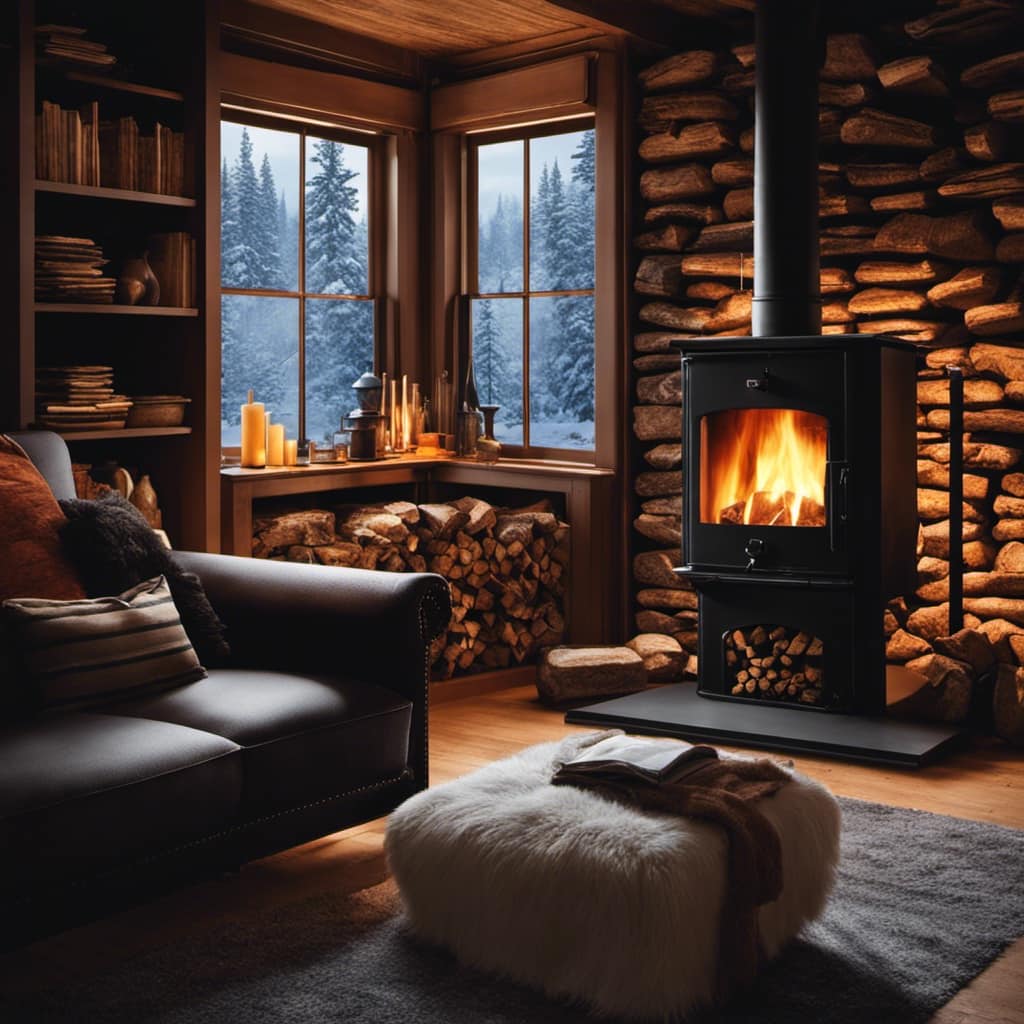
Are There Any Specific Building Codes or Regulations That Need to Be Followed When Adding a Wood Stove to a House?
When adding a wood stove to a house, it is crucial to adhere to building codes and regulations. These guidelines ensure safety and prevent potential hazards. Let’s explore the specific requirements for a successful installation.
How Do I Determine the Appropriate Location for Installing a Wood Stove in My House?
To determine the appropriate location for installing a wood stove in your house, consider factors such as proximity to flammable materials, clearances required by building codes, and accessibility for venting. The installation process should adhere to safety guidelines and regulations.
Can a Wood Stove Be Installed in a House Without an Existing Chimney?
Installing a wood stove in a house without a chimney? It’s possible! There are wood stove alternatives like direct venting or pellet stoves. However, the cost of installing a wood stove will vary depending on the chosen method.
Are There Any Special Considerations or Precautions to Take When Installing a Wood Stove in a Mobile Home?
When installing a wood stove in a mobile home, there are special considerations and precautions to take. It’s important to ensure proper ventilation, use heat-resistant materials, and follow local building codes for safety.
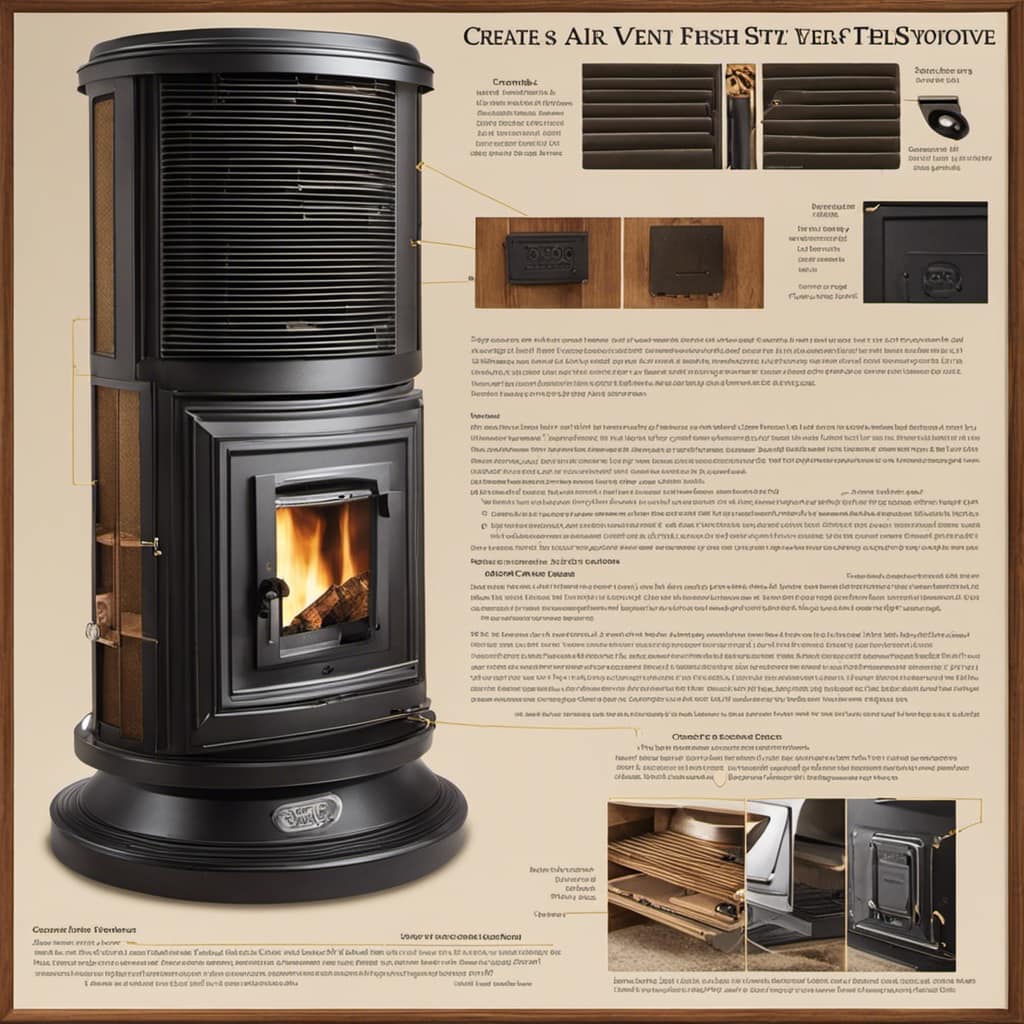
Conclusion
Adding a wood stove to your house is a great way to enhance your heating system and create a cozy atmosphere. According to a recent study, homes with wood stoves have been found to reduce heating costs by up to 30%.
By carefully assessing your heating needs, choosing the right wood stove, and properly installing and maintaining it, you can enjoy the warmth and cost-saving benefits for years to come.
Stay knowledgeable and experienced in your wood stove journey, and enjoy the comfort it brings to your home.
Growing up surrounded by the vast beauty of nature, Sierra was always drawn to the call of the wild. While others sought the comfort of the familiar, she ventured out, embracing the unpredictable and finding stories in the heartbeat of nature.
At the epicenter of every remarkable venture lies a dynamic team—a fusion of diverse talents, visions, and passions. The essence of Best Small Wood Stoves is crafted and refined by such a trio: Sierra, Logan, and Terra. Their collective expertise has transformed the platform into a leading authority on small wood stoves, radiating warmth and knowledge in equal measure.





